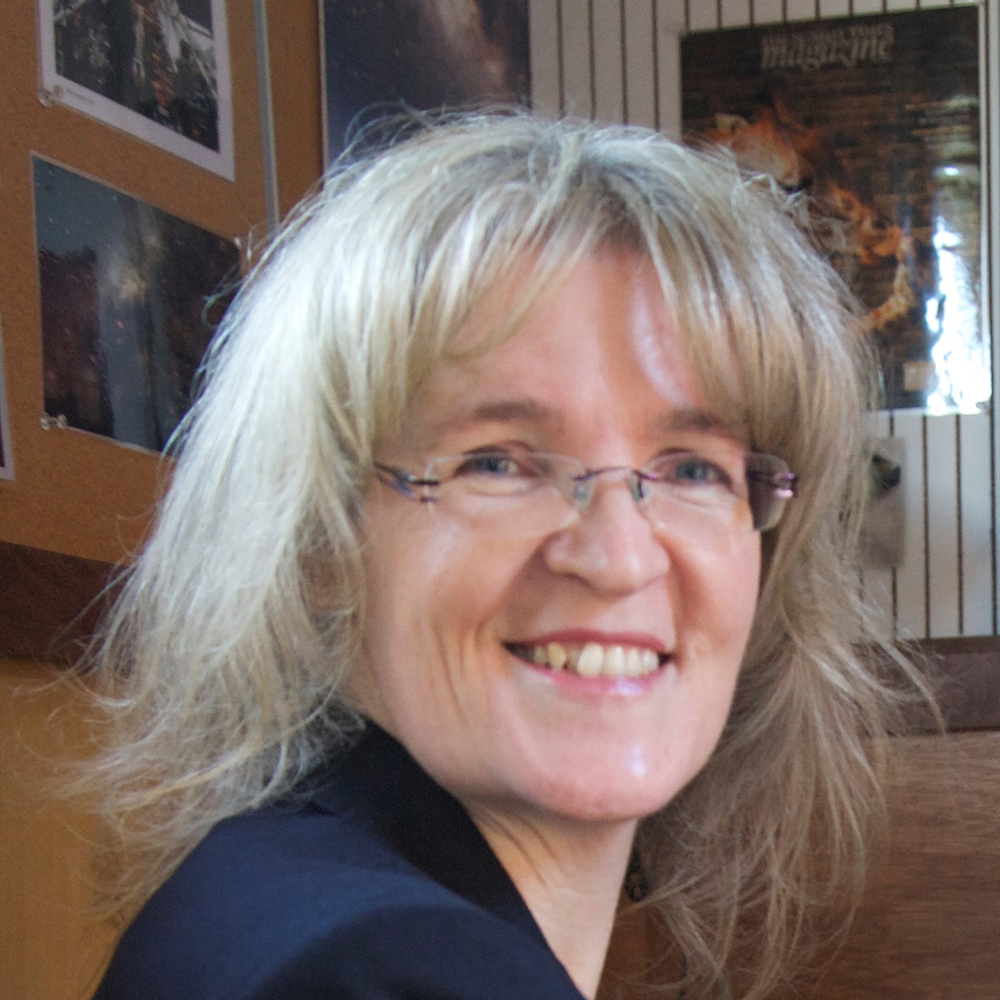On 12 May 2022 at 13:07 UT, the first ever direct visual image of our closest supermassive black hole was unveiled by the Event Horizon Telescope (EHT) team. It was a thrilling, profound moment.
Though not the first black hole picture presented by the EHT collaboration – that accolade belongs to the photo of the black hole in M87 first presented in April 2019 – it was one long sought after.
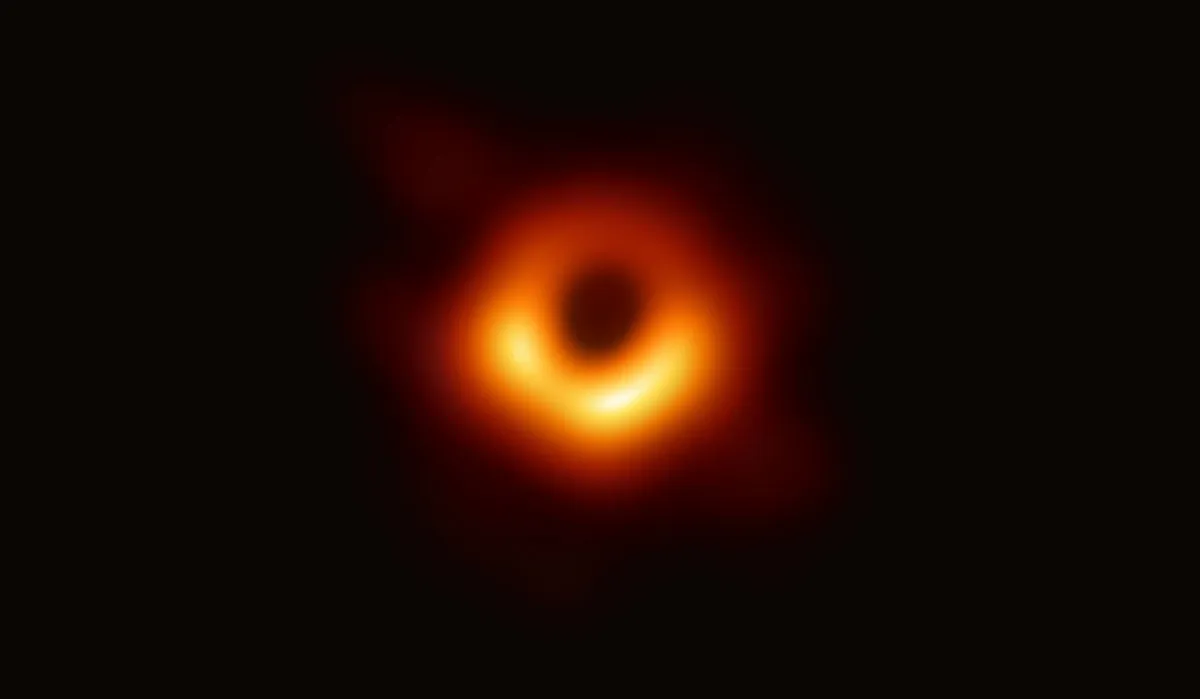
As nothing, not even light, can escape beyond a black hole’s event horizon, they are impossible to see directly.
Instead, for decades, astronomers have attempted to track them down by looking for giant stars circling an otherwise invisible point in space.
Now we have its image or, more accurately, its silhouette. Our Galaxy’s ‘central engine’ exists.
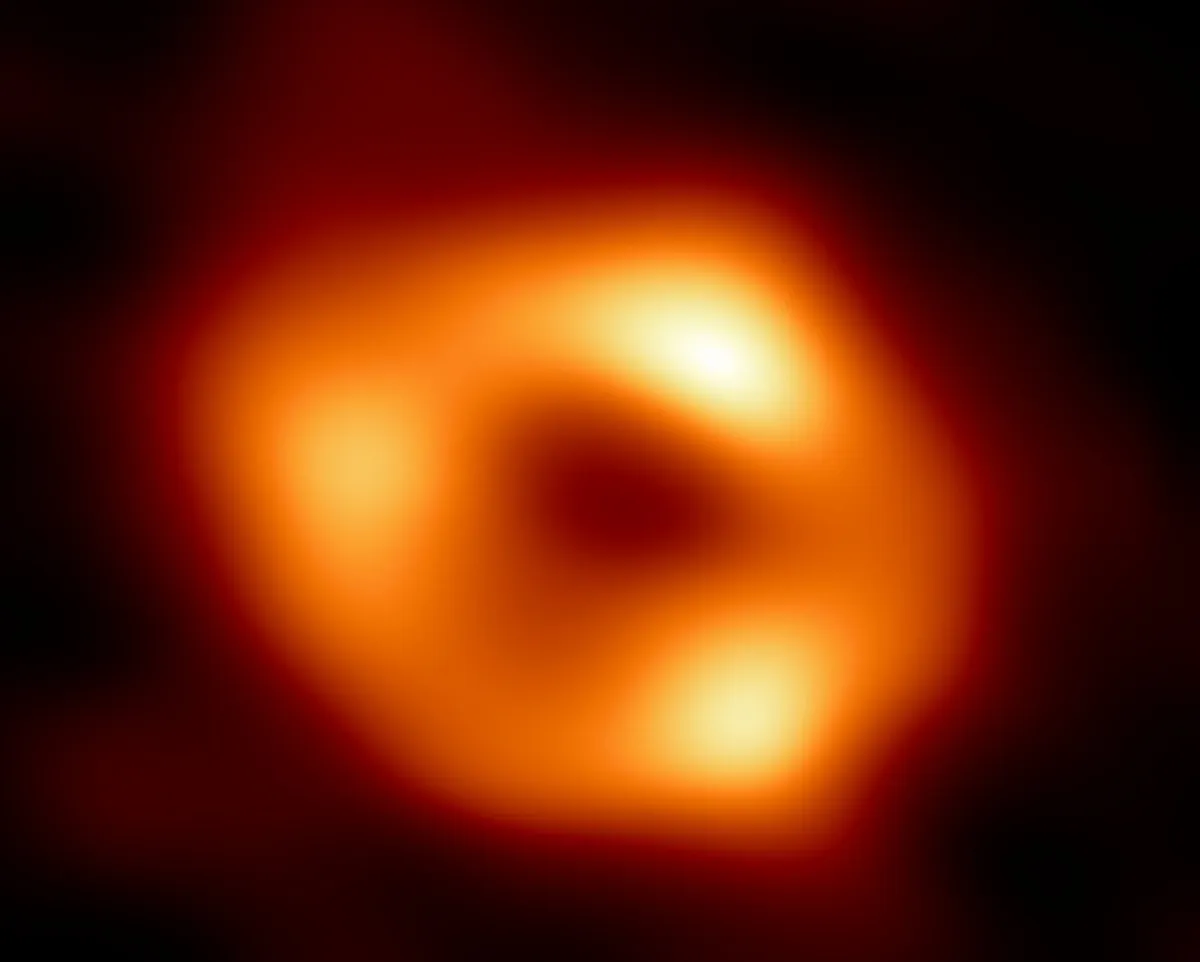
Over five nights in April 2017, astronomers observed Sgr A* (pronounced “sadge-ay-star”) in the constellation of Sagittarius with eight radio telescopes, at six sites from Arizona to the South Pole and Spain to Hawaii.
Part of the EHT collaboration – a global network of synchronized radio dishes yielding an Earth-sized virtual telescope of planet-wide aperture – it was the result of decades of work involving more than 300 people and 80 institutions.
Using the technique of very long baseline interferometry, the EHT offered the highest possible resolving power from the surface of Earth, capturing objects as small as 20 micro-arcseconds on the sky – that’s equivalent to spying a doughnut on the Moon.
The Event Horizon Telescope
The EHT is a planet-wide network of 11 synchronized radio telescopes.
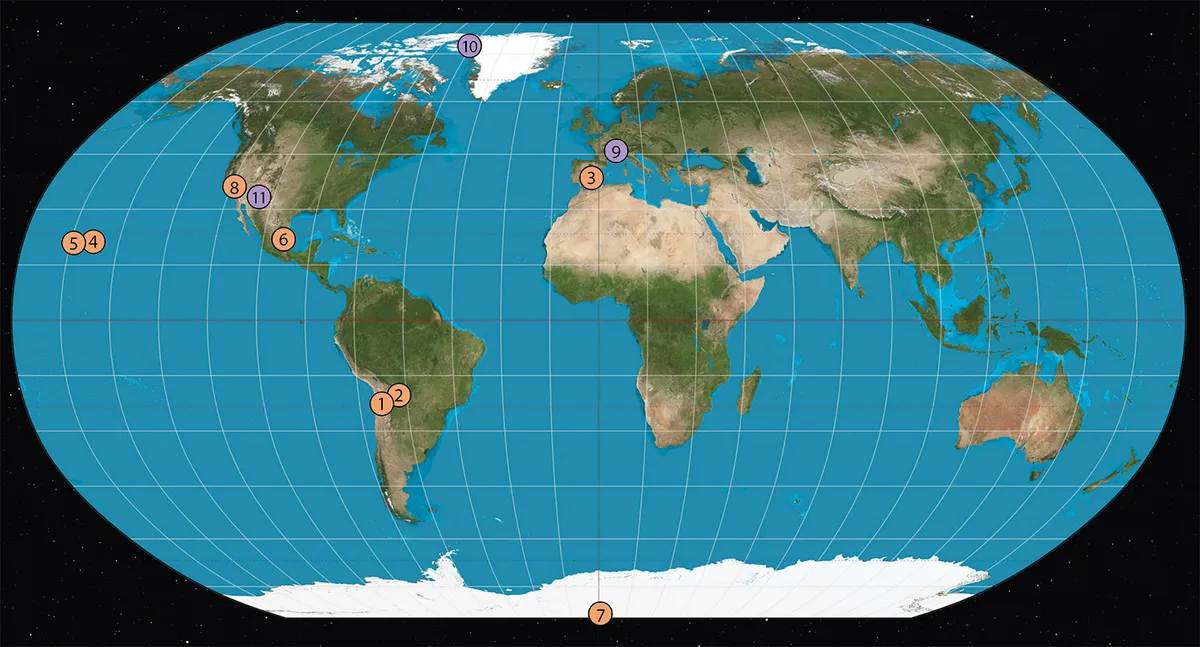
1.Atacama Large Millimeter Array (ALMA), Chile
2. Atacama Pathfinder Experiment (APEX), Chile
3. IRAM 30-m Telescope, Pico Veleta, Sierra Nevada, Spain
4. James Clark Maxwell Telescope (JCMT), Hawaii, USA
5. Submillimeter Array (SMA), Hawaii, USA
6. Large Millimeter Telescope (LMT), Alfonso Serrano, Mexico
7. South Pole Telescope (SPT)
8. Submillimeter Telescope (SMT), Mount Graham, Arizona, USA
Additional telescopes since 2017:
9. IRAM NOEMA Telescope, French Alps
10. Greenland Telescope (GLT)
11. University of Arizona 12-meter Telescope, Kitt Peak, Arizona, USA
Sagittarius A* vs the M87 black hole
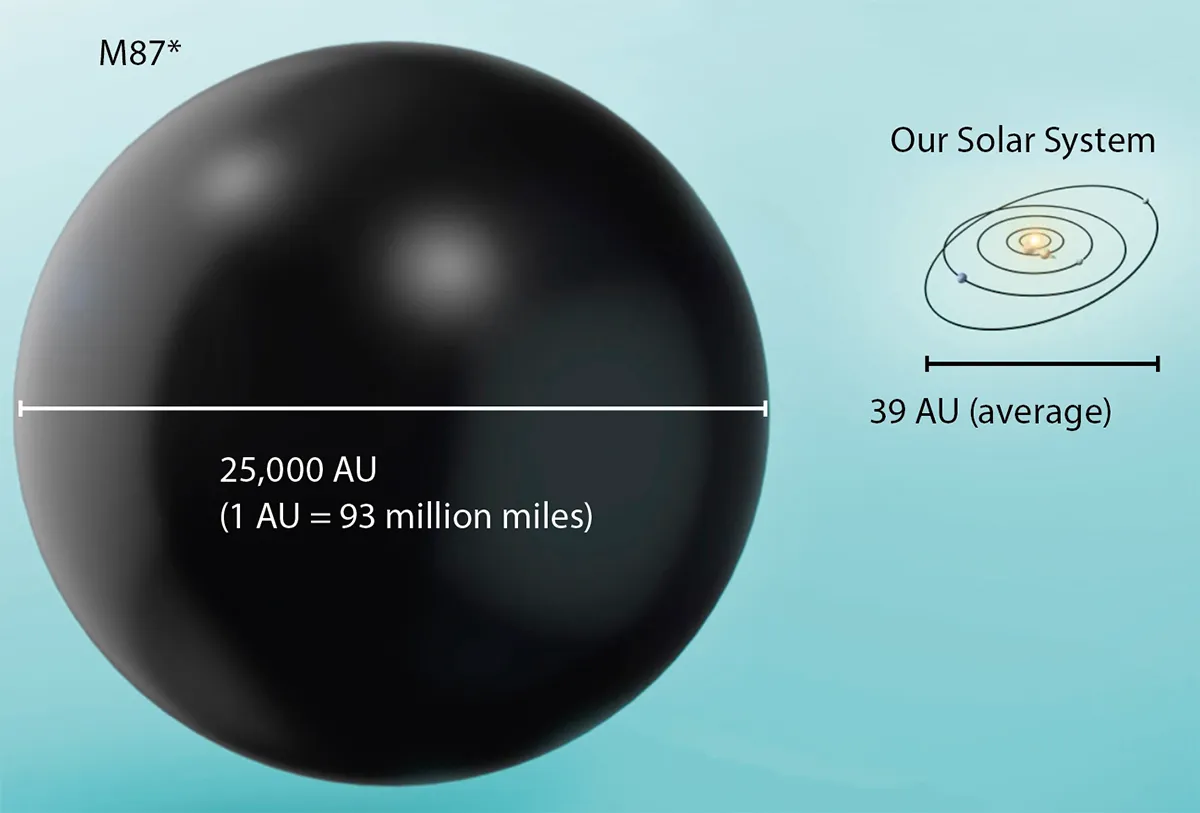
Dr Ziri Younsi from University College London is co-lead of the Fundamental Physics working group on the next generation EHT (ngEHT).
He affirmed it was, "a very challenging task compared to imaging M87* located 53 million lightyears away."
Though Sgr A* is much closer than that, it is comparatively tiny, with a mass of four million Suns crammed into a region smaller than Mercury’s orbit – 1,500 times smaller than M87*, a behemoth weighing in at 6.5 billion Suns.
For size comparison, if M87* was the size of Wembley Stadium, then Sgr A* would be a burger at the concession stand.
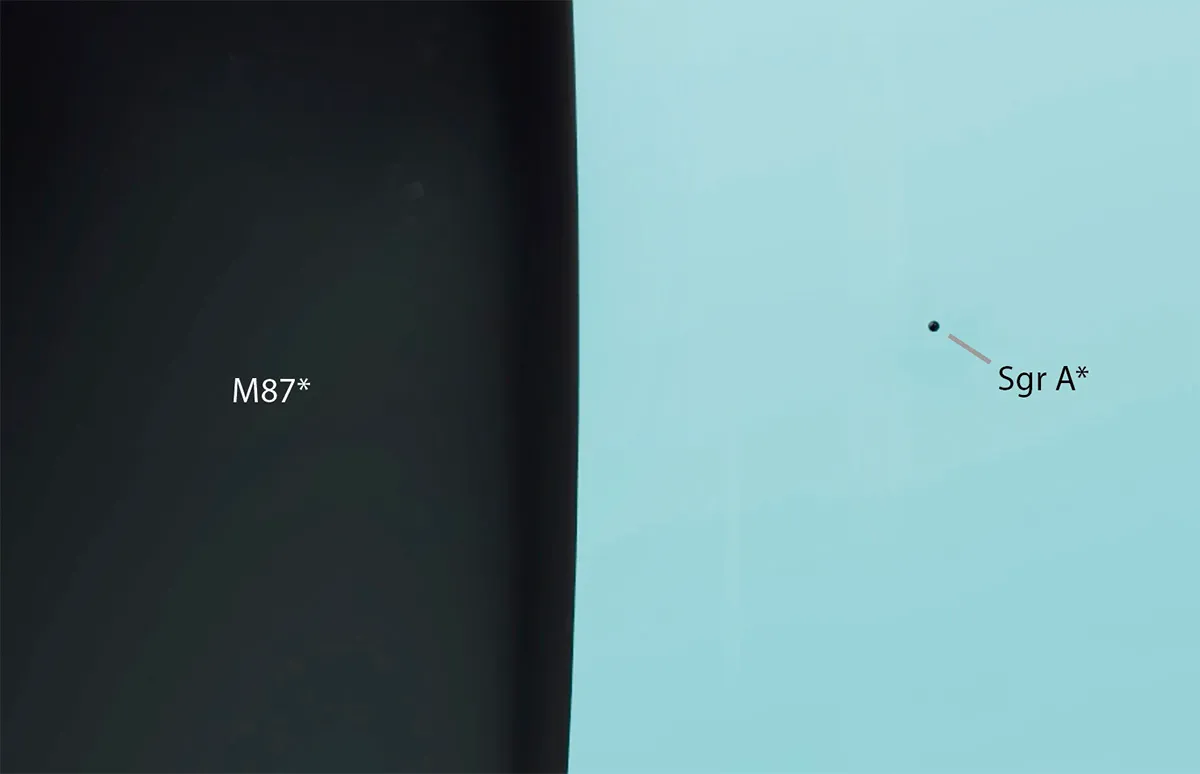
The challenge of trying to 'see' a black hole
"Gas circling Sgr A* and M87* moves at the same speed – almost the speed of light – but it circuits Sgr A* in a few minutes compared to M87*’s days," says Younsi.
"Observing Sgr A*’s turbulent gas flow, minute-by-minute, created ‘motion blur’. Moreover, we were looking through the entire Galactic plane stuffed with stars, gas and dust, all rapidly-changing over different timescales."
"This created a screen of scattered radio waves. Trying to see Sgr A* was like standing in your garden in a rainstorm peering through a steamed-up kitchen window watching your frantic puppy – our supermassive black hole – careering around in circles chasing its tail.
"By comparison, M87* is a puppy napping on a sunlit patio."
How the Milky Way's black hole image was captured
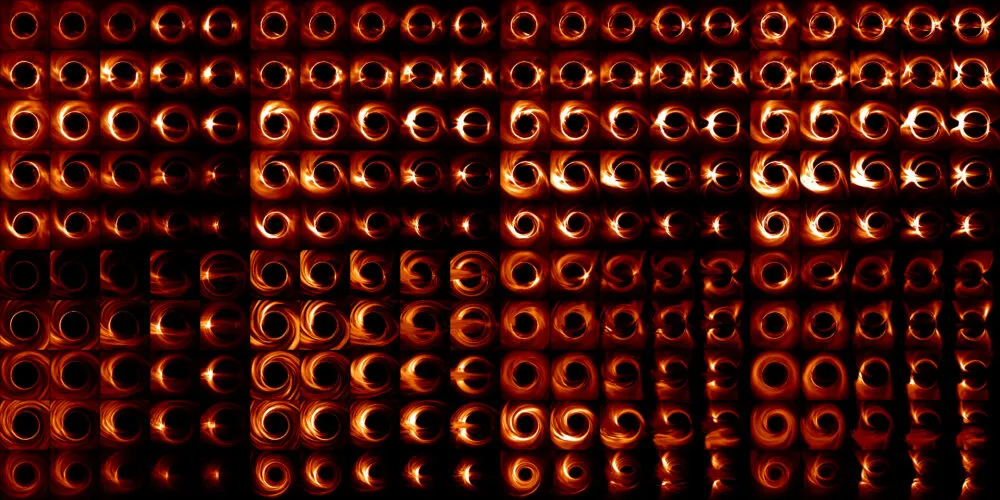
It has taken five years for the EHT team to figure it all out. It was a daunting task: collaboration members split into multiple teams, each using independent methods to reconstruct an image from the data.
The result was uncertain; many images revealed a ring, but not all.
To solve this dilemma, scientists used some of the most sophisticated computer algorithms ever written to simulate different images, and then used these to test what results their various image reconstruction methods would give.
Eventually they were certain they had detected a ring, and what a spectacular, ground-breaking result!
EHT’s vision – three million times sharper than the human eye – revealed Sgr A* is strikingly similar in its overall morphology to M87*.
There is a bright fuzzy ring of light – radio emission from electrons in the gas swishing around the black hole – encircling a dark centre.
This dark core is where the light, captured by immense gravity, has plunged past the event horizon never to be seen again, but leaving a ‘shadow’ of the black hole’s presence.
Sgr A*’s appetite compared to M87* is surprisingly slow; it is effectively starving, surviving on whispers of gas from the winds of nearby stars – comparable to a human swallowing one grain of rice every million years.
The infalling gas emits just a few hundred times as much energy as our Sun, so at a cosmically ‘close’ 27,000 lightyears, Sgr A* cannot be considered bright.
What can we learn from a black hole image?

The measurement also allowed astronomers to measure the size of Sgr A*’s event horizon, which according to Einstein’s theory of gravity should be directly related to its mass.
The EHT measured Sgr A*’s event horizon spanning around 51.8 micro-arcseconds, precisely as the theory predicted.
But there are still several mysteries our black hole might be hiding.
Sgr A* lies on its side so that we look down at its head, and it is spinning counter-clockwise at a yet to be determined rate in the same direction as its orbiting gas.
This orientation may hide a relativistic jet. And the bright knots dotting the ring?
These could be areas rich in gas, or artifacts from the observation process – it will take more work yet to determine what these mean.
In fact, producing the image is just the start. Subsequent observing campaigns have generated data that also requires analysing.
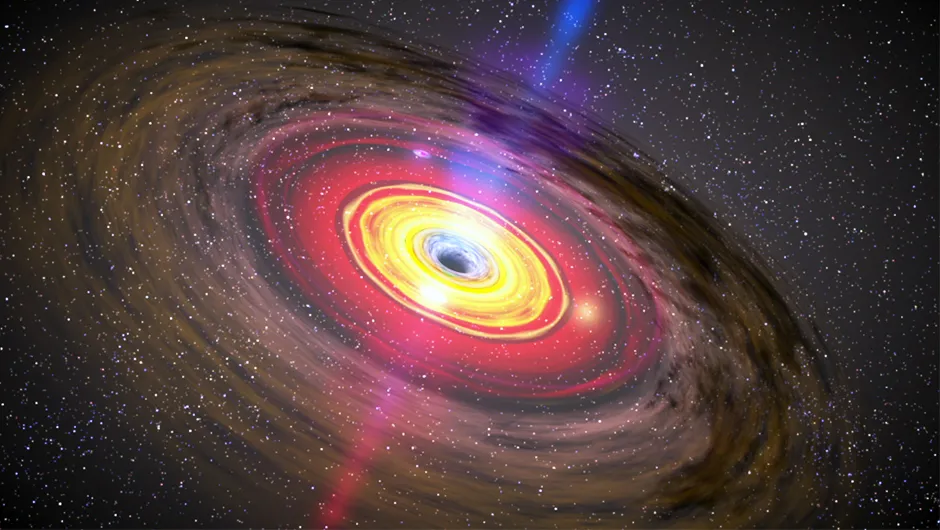
More dishes are being added to the telescope between now and 2030 to create the ngEHT.
This will expand the current 230 GHz radio frequency to 345 GHz, improving image resolution by 50%.
Movies will showcase how black hole silhouettes change over time, the ‘slower’ M87* offering a possible ‘world premier’.
Who knows? Within a decade we may enjoy videos of Sgr A* in action.
As Dr Younsi so eloquently stated, "black holes play a fundamental role in the genesis of the Universe, our Galaxy and every other galaxy.
"They are the bedrock, the gravitational anchors holding everything together so it’s remarkable that we can actually see them now".
Remarkable indeed, and so much more science is still to come!
How interferometry works

The technique of very long baseline interferometry combines data from pairs ofEHT telescopes to reveal boththe small- and large-scale structure of the target.
The varying distances between the telescopes – known as the baseline – means they receive the signal from the black hole at slightly different times, which can be measured using very accurate clocks.
As the planet turns, each telescope’s view of the Galactic centre changes, as do the dishes’ apparent separations as seen from the black hole.
Such changes help ‘fill in’ the virtual antenna. To compile the image, a variety of baselines are needed, and the more the merrier.
The enormous volume of raw recorded data (3.5 petabytes, equivalent to 750,000 DVDs) from each EHT site is stored on high-performance helium-filled hard drives and transported by commercial freight aircraft to highly specialised supercomputers known as correlators at the Max Planck Institute for Radio Astronomy (MPIfRI) in Bonn, Germany and the Massachusetts Institute of Technology’s (MIT) Haystack Observatory in Massachusetts, USA, where it is combined and calibrated to within trillionths of a second.
This article originally appeared in the July 2022 issue of BBC Sky at Night Magazine.
